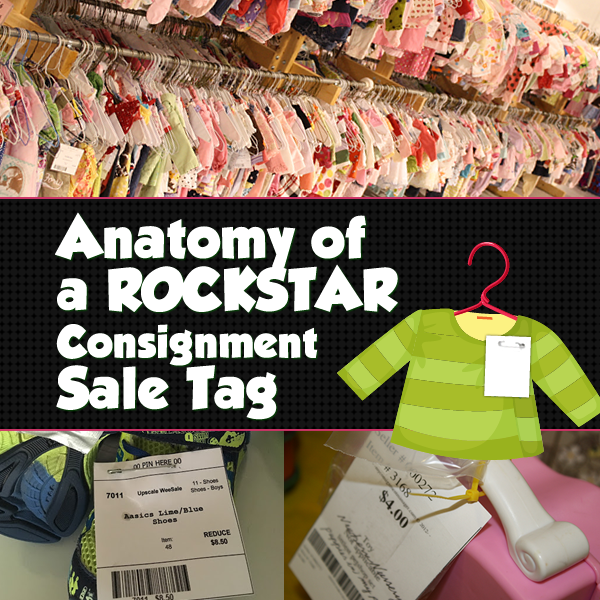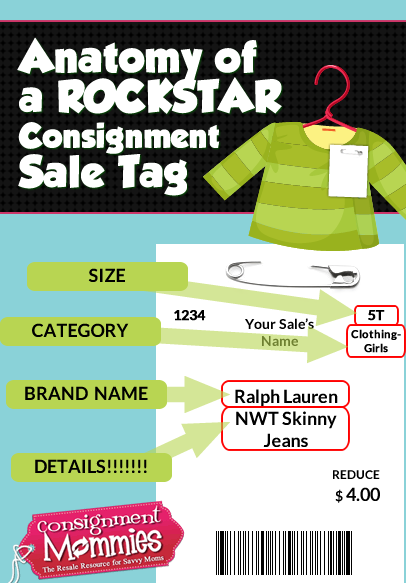
Every season, our sale ends up with at least one lost tag that is missing it’s mate. It usually has “outfit” or “pants” as a one-word description. Here are four things every tag should have on it.
#1 – Brand name
For most toys and baby gear and all clothing and shoes, write the brand name on the first line. When something loses its tag, the name brand will always be used to find the matching tag.
#2 – Category
If you have to identify a category when creating tags, make sure you use the right one. For sales using a software program, this information will be used to plan the floor layout.
#3 – Correct size
Pay attention to the size for clothes, especially if you are typing information into a database to create your tags. Not only will the size matter to shoppers, but it will determine where your items are put on the racks.
#4 – Commonly used descriptive words or abbreviations:
Beyond the brand name, the details you put on a tag will help sell it. It also helps with those lost tags we’ve mentioned. Always include a common color and some descriptive detail. If it’s a pair of dark jeans, is the hem bootcut? Are they skinny jeans? These words might help sort out which jeans match which tag. If they all had “jeans” as the description, it’d be much harder to fix.

Extra Notes for Hand-Written Taggers
#1 – Easy to read numbers:
If you’re using handwritten tags, make sure your numbers are legible and easy to read. It can be a challenge to differentiate between a 4 and a 9.
#2 – Know your consignor number if you’re using handwritten tags.
You wouldn’t want someone else to get paid for your items because you wrote down the wrong consignor number.
In the end, taking a little extra time to make sure your tags are in tip-top shape will make you a better consignor. Make the effort to put your best tags out there.
